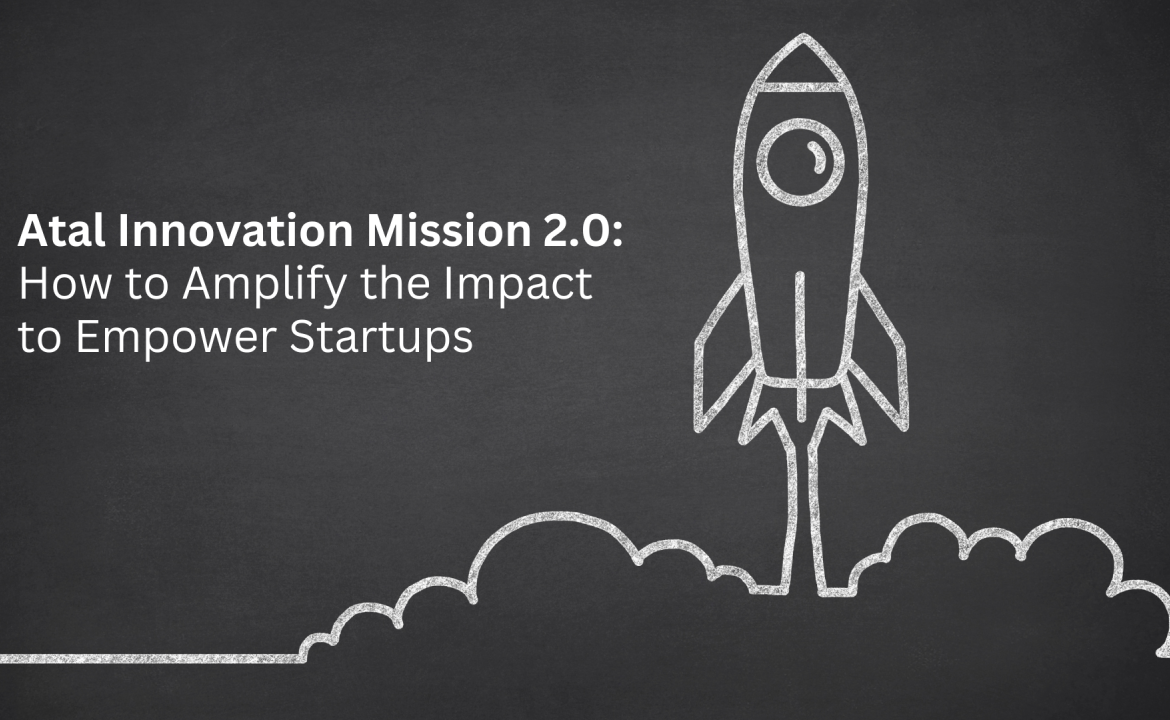Atal Innovation Mission 2.0: How to Amplify the Impact to Empower Startups
The Government of India has recently approved an allocation of INR 2,750 crore for the Atal Innovation Mission (AIM) 2.0, underscoring its unwavering commitment to fostering innovation and entrepreneurship across the nation. This initiative aligns seamlessly with the vision of the Honourable Prime Minister, Shri Narendra Modi, who envisions a self-reliant and technologically advanced India by 2047—the centenary of India’s independence, marking the culmination of the Amrit Kaal. While the mission’s noble intentions are commendable, its effectiveness can be significantly amplified by refining implementation strategies and engaging private players as partners.
Challenges and Areas for Improvement
To maximize the impact of AIM 2.0 and truly empower startups, it is essential to address several challenges that currently hinder the mission’s full potential:
- Implementation Efficiency: Effective translation of policies into action is crucial. Streamlining administrative processes and reducing bureaucratic hurdles can enhance efficiency, ensuring that resources reach startups promptly and effectively. Resource Optimization: Continuous monitoring and evaluation are necessary to ensure that Atal Tinkering Labs (ATLs) and Atal Incubation Centers (AICs) are fully utilized and meet their objectives. Proper allocation of funds and resources to areas where they are most needed will optimize outcomes.
- Quality Mentorship and Skill Development: Bridging the skill gap through targeted training programs and accessing experienced mentors is vital for startups to thrive. Without adequate guidance and skill enhancement, startups may struggle to navigate challenges and scale their operations.3
- Awareness and Outreach: Enhancing communication strategies to inform potential innovators about the opportunities available under AIM 2.0 is essential. Many entrepreneurs, especially in rural and remote areas, may be unaware of the support structures in place. 4
- Sustainability and Scalability: Providing ongoing support to startups post-incubation ensures their long-term success and ability to scale. This includes access to markets, additional funding rounds, and continuous mentorship.
Engaging Private Players as Partners
To overcome these challenges and maximize the mission’s impact, engaging private players as partners becomes crucial. Private sector involvement can inject fresh perspectives, resources, and expertise into AIM 2.0, complementing government efforts. By fostering collaborative relationships, the mission can tap into the strengths of established businesses and industry leaders. Here are some ways private players can contribute:
- Leveraging Expertise: Private sector companies bring a wealth of experience in innovation and entrepreneurship. Their involvement can enhance the quality of mentorship and training provided to startups, offering practical insights and real-world experience. 2
- Co-investment Opportunities: Collaborative funding models can augment the financial resources available, enabling larger-scale projects and sustained support for startups. This not only increases the financial pool but also distributes risk. 3
- Market Access and Networking: Partnerships with private entities can provide startups with access to domestic and international markets, supply chains, and professional networks critical for growth. This exposure can accelerate a startup’s journey to market leadership. 4
- Technology and Infrastructure Sharing: Collaborations can lead to the sharing of cutting-edge technologies and infrastructure, reducing costs and accelerating development. Startups can leverage advanced tools and platforms that might otherwise be inaccessible.
- Corporate Social Responsibility (CSR) Alignment: Engaging in AIM 2.0 aligns with the CSR objectives of many corporations, creating a win-win scenario where societal impact is maximized. Companies fulfill their CSR mandates while fostering innovation.
Recommendations for Enhanced Implementation
To fully realize PM Modi’s vision through AIM 2.0, it is essential to refine implementation strategies. By adopting a proactive approach and embracing innovative solutions, the mission can overcome existing hurdles and achieve its objectives more effectively. The following recommendations can contribute to enhanced implementation:
- Strengthening Public-Private Partnerships: Establish formal collaboration frameworks with clear guidelines and mutual benefits. This approach harnesses the strengths of both sectors for collective advancement, ensuring that roles and expectations are well-defined.
- Enhancing Implementation Mechanisms: Utilize digital tools for efficient management, ensuring transparency and accountability. Streamlined processes can reduce delays and improve stakeholder confidence. For example, an online portal for applications and progress tracking can make interactions more efficient.
- Prioritizing Quality and Impact: Focus on the effectiveness of ATLs and AICs through regular assessments and feedback mechanisms. Emphasizing quality over quantity leads to better outcomes, ensuring resources are invested in high-impact areas.
- Expanding Skill Development Programs: Collaborate with educational institutions and online platforms to provide comprehensive training. This bridges the skill gap and equips entrepreneurs with necessary competencies like business management, marketing, and technical skills. 5
- Increasing Awareness Campaigns: Leverage media and community engagement to reach a wider audience of potential innovators. Effective communication strategies enhance participation, especially among underrepresented groups. 6
- Ensuring Post-Incubation Support: Develop mechanisms for continued mentorship, funding access, and integration into markets. Ongoing support significantly improves the sustainability of startups, helping them navigate challenges as they grow.
Conclusion
The Atal Innovation Mission 2.0 is a cornerstone in actualizing PM Modi’s vision for India’s Amrit Kaal—a period aimed at achieving holistic growth and positioning India as a global leader by 2047. To amplify the impact of AIM 2.0 and truly empower startups, it is imperative to address the challenges in implementation and leverage the strengths of private sector partnerships. By refining strategies, enhancing operational efficiency, and fostering collaboration between government and private entities, AIM 2.0 can significantly enhance its effectiveness. This collaborative approach aligns with PM Modi’s emphasis on collective effort (“Sabka Saath, Sabka Vikas, Sabka Vishwas, Sabka Prayas”) to drive national development. As India embarks on this transformative journey, the synergy between government initiatives and private sector dynamism will be pivotal. The success of AIM 2.0 will not only contribute to economic growth but also to the realization of a self-reliant, technologically advanced, and prosperous India by 2047, fulfilling the aspirations of the Amrit Kaal.
#AskKashyap #AtalInnovationMission #startups #entrepreneurship #syncoro

